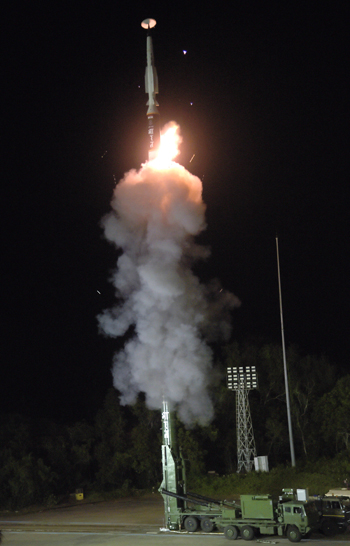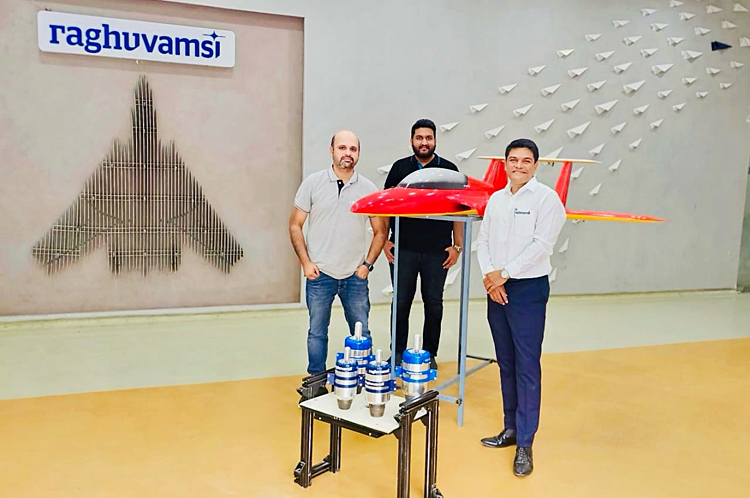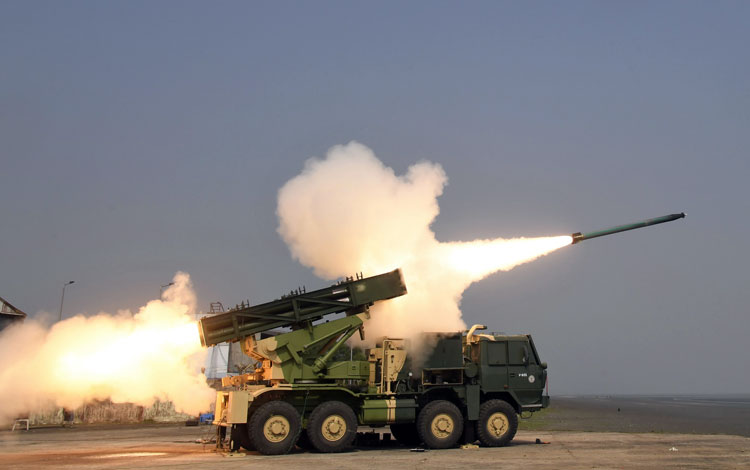INDIAN ARMED FORCES CHIEFS ON OUR RELENTLESS AND FOCUSED PUBLISHING EFFORTS

The insightful articles, inspiring narrations and analytical perspectives presented by the Editorial Team, establish an alluring connect with the reader. My compliments and best wishes to SP Guide Publications.

"Over the past 60 years, the growth of SP Guide Publications has mirrored the rising stature of Indian Navy. Its well-researched and informative magazines on Defence and Aerospace sector have served to shape an educated opinion of our military personnel, policy makers and the public alike. I wish SP's Publication team continued success, fair winds and following seas in all future endeavour!"

Since, its inception in 1964, SP Guide Publications has consistently demonstrated commitment to high-quality journalism in the aerospace and defence sectors, earning a well-deserved reputation as Asia's largest media house in this domain. I wish SP Guide Publications continued success in its pursuit of excellence.
- A leap in Indian aviation: Prime Minister Modi inaugurates Safran's Global MRO Hub in Hyderabad, Calls It a Milestone
- All about HAMMER Smart Precision Guided Weapon in India — “BEL-Safran Collaboration”
- India, Germany deepen defence ties as High Defence Committee charts ambitious plan
- True strategic autonomy will come only when our code is as indigenous as our hardware: Rajnath Singh
- EXCLUSIVE: Manish Kumar Jha speaks with Air Marshal Ashutosh Dixit, Chief of Integrated Defence Staff (CISC) at Headquarters, Integrated Defence Staff (IDS)
- Experts Speak: G20 Summit: A Sign of Global Fracture
Indigenous Next-Generation Muscle
These developments in domestic capabilities represent a substantial technological leap, potentially doubling or tripling the current engagement ranges
 |
The Author is Former Director General of Information Systems and A Special Forces Veteran, Indian Army |

India is part of a select group of nations holding the top 10 ICBMs, which in descending order as of now are: RS-28 Samrat (Russia) with speed of Mach 20+ and 18,000-km range; R-36M2 Voevoda (Russia) with speed of Mach 20+ and 16,000-km range; DF-41 (China) with speed of Mach 25 and 12-15,000-km range; Trident II D5 (USA/UK) with speed of Mach 24 and 12,000-km range; Minuteman III (USA) with speed of Mach 23 and 13,000-km range; Hwasong-15 (North Korea) with speed of Mach 22+ and 13,000-km range; RS-24 Yars (Russia) with speed of Mach 20+ and 11,000-km range: JL-3 (China) with speed of Mach 20+ and 10-12,000-km range; M-51 (France) with speed of Mach 20+ and 8-10,000-km range; Agni-V (India) with speed of Mach 24 and 7-8,000-km range.
India's Defence Research and Development Organisation (DRDO) is now developing the Extended Trajectory Long Duration Hypersonic Cruise Missile (ET-LDHCM) under Project 'Vishnu', which will place India in the group of hypersonic-capable nations. This next-generation hypersonic cruise missile represents the culmination of decades of indigenous research and development. Special features of the ET-LDHCM include: Mach 8 speed; advanced scramjet engine enabling speed of 1,500-km; warheads weighing between 1,000 and 2,000 kgs; can deliver both conventional and nuclear warheads; multi-platform launch capability, allowing deployment from land-based launchers, naval vessels, and aircraft; advanced guidance systems that enable mid-course corrections and evasive manoeuvres.
India's Defence Research and Development Organisation (DRDO) is developing the Extended Trajectory Long Duration Hypersonic Cruise Missile (ET-LDHCM) under Project 'Vishnu', which will place India in the group of hypersonic-capable nations
While the BrahMos operates at supersonic speeds of Mach 2.8 to 3.0, the ET-LDHCM's Mach 8 capability represents nearly a threefold improvement in velocity; reduced flight times and enhanced survivability against defensive systems. Its 1,500-km reach provides flexibility in targeting options and reduces the need for forward deployment of launch platforms. The scramjet propulsion system offers several advantages over conventional propulsion systems, including higher fuel efficiency and the ability to operate at hypersonic speeds without the need for rotating machinery. The engine's air-breathing design eliminates the need to carry oxidizers, allowing for larger payloads and extended range capabilities. To cope with extreme temperatures that can exceed 2,000 degrees Celsius in hypersonic flight, the ET-LDHCM incorporates advanced thermal barrier coatings and heat-resistant materials specifically designed to withstand these extreme conditions.
The DRDO Chief, Samir V. Kamat, recently confirmed that the indigenous hypersonic cruise missile is in an advanced stage of development. According to Dr Kamat, one development trial has already been completed, and all remaining development trials are expected to conclude within the next two to three years, after which the missile will be ready for induction into the Indian Armed Forces. The hypersonic glide missile, often referred to as the 'Dhvani HGV', features a blended wing-body design with a wedge-shaped structure to optimise speed and manoeuvrability. The vehicle is equipped with an advanced heat protection system using ultra-high-temperature ceramic composites, enabling it to withstand the extreme temperatures generated during atmospheric re-entry. HGVs are typically launched atop ballistic missile boosters, reaching the edge of the atmosphere before detaching and gliding toward their targets at speeds exceeding Mach 5. Their manoeuvrability, coupled with hypersonic speeds, allows for deep precision strikes against high-value targets, both conventional and nuclear, across vast distances. India's ET-LDHCM hypersonic cruise missile represents a watershed moment in the nation's defence technological capabilities, providing a foundation for future indigenous hypersonic programs.
India's ET-LDHCM hypersonic cruise missile represents a watershed moment in the nation's defence technological capabilities, providing a foundation for future indigenous hypersonic programmes
At the 55th Paris Air Show, held from June 16 to June 22 this year, Hyderabad-based Raghu Vamsi Aerospace has unveiled India's first jet-powered fixed-wing kamikaze UAV named 'Astra 100'. Featuring 100 per cent indigenous systems, it also introduced India's first 40 KGF micro turbojet engine. Raghu Vamsi Aerospace has developed Astra 100 under its deep-tech brand ARROBOT. With a range of 200 km and speeds of up to 450 km/h, the UAV is powered entirely by indigenous systems, including flight control, propulsion, and telemetry.

Astra 100 has successfully completed test trials earlier this year. The company said in a press release on June 18, saying, “We are building the future of autonomous warfare with 100 per cent indigenous systems. The Astra 100 proves India's readiness to lead in this space.” Successfully tested at the company's Hyderabad facility in the presence of DRDO officials, the 40 KGF engine is part of a family of four engines (14, 19, 25, and 40 KGF), all designed and manufactured entirely in India. “This engine represents a historic leap for Indian aerospace propulsion. It's the culmination of years of R&D, manufacturing precision, and a bold vision for self-reliant defence technologies,” said Vamsi Vikas, Managing Director, Raghu Vamsi Aerospace Group.
At the 55th Paris Air Show this year, Hyderabad-based Raghu Vamsi Aerospace has unveiled India's first jet-powered fixed-wing kamikaze UAV named 'Astra 100'
To bolster its position as a global aerospace player, Raghu Vamsi Aerospace recently acquired WMT Precision LLC, a 40-year-old US-based aerospace manufacturing company in Syracuse. Earlier this year, the company also acquired PMC Group (UK), marking its entry into the oil & gas sector. The company is developing a 2,50,000 sq ft manufacturing facility at Hardware Park, Hyderabad. Expected to be operational by early 2026, the facility will feature specialised divisions for: high-precision machining for global OEMs, sub-assemblies for missile systems, final assembly for engines, UAVs, and unmanned ground vehicles.

Another good news is that the DRDO is set to introduce a new advanced Pinaka rocket system with extended ranges of 120 km and 300 km. These next-generation variants, designated as Pinaka-3 and Pinaka-4 as per news reports of June 19, 2025, are expected to be inducted into the Indian Army within the next three to five years. Current operational variants of the Pinaka Multi-Barrel Rocket Launcher (MBRL) system include the MK-I version (40 km range), Pinaka-II (60 km range) and the MK-II ER (90 km range). With 12 launcher tubes, the system can fire a salvo of 12 rockets within just 44 seconds, with a complete battery of six launchers capable of saturating a 1,000 x 800-meter target area with 72 rockets in the same time-frame. Each rocket carries a 100-250 kg warhead having various munition types including high explosive fragmentation, cluster munitions, incendiary, anti-personnel, anti-tank, and mine-laying capabilities.
DRDO Chairman Dr Samir V. Kamat has confirmed that development work is progressing on Pinaka-3 and Pinaka-4 variants. The Pinaka-3 system is currently in advanced stages of development, with user trials scheduled for late 2025 and initial testing of the 300mm rocket variant planned for October 2025. These developments represent a substantial technological leap, potentially doubling or tripling the current engagement ranges. The development underscores India's commitment to achieving complete self-reliance in artillery systems while establishing a formidable deterrent capability across its borders.





